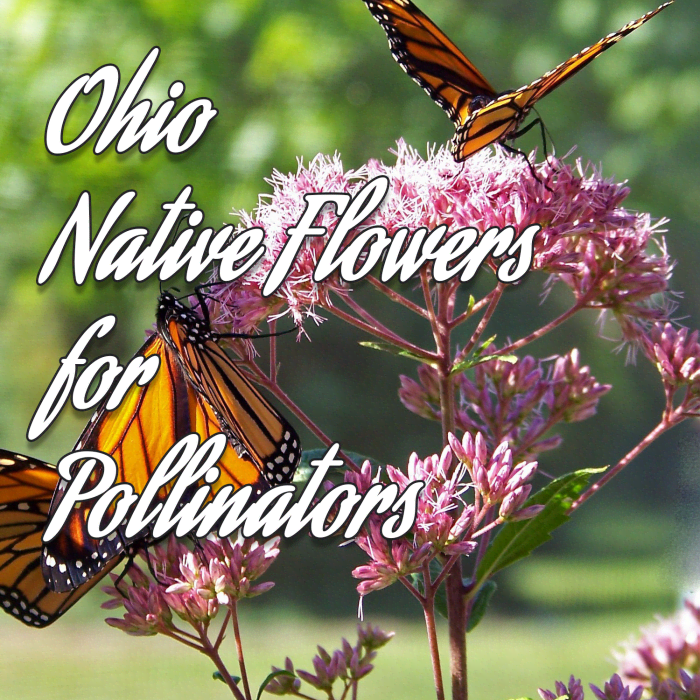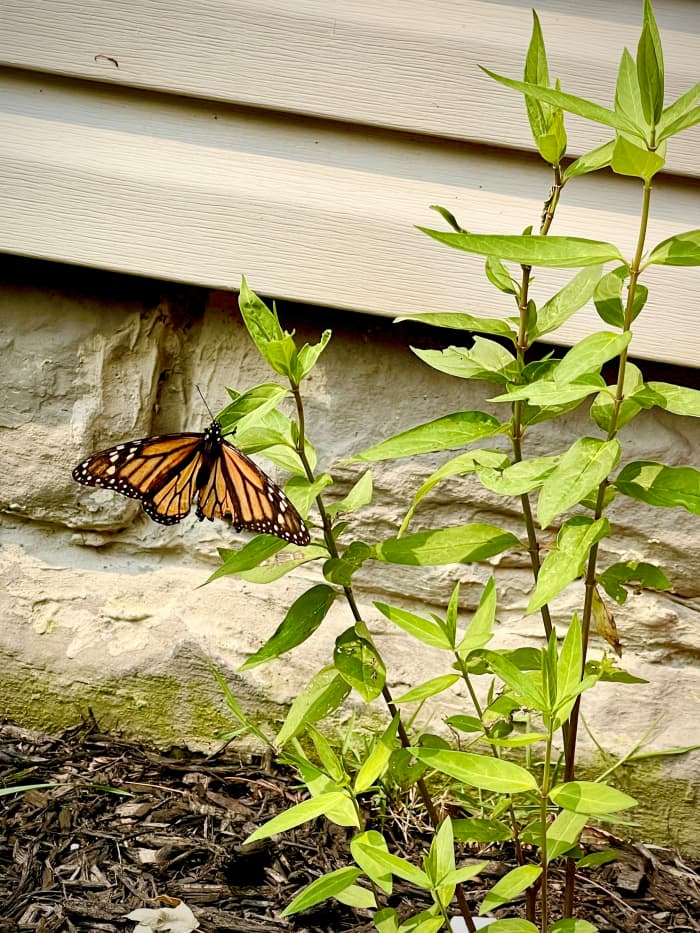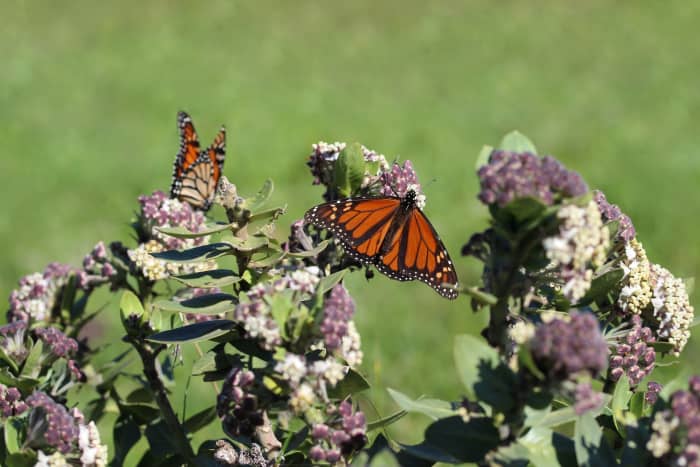When To Start Gardening In Ohio
Jennifer is an environmentalist from Ohio. She is passionate about advocating for the planet and wildlife through gardening and education.

Ohio Native Flowers for Pollinators
What is a Pollinator Garden and Why are Pollinators Important?
A pollinator garden is simply a garden that features many plants preferred by pollinator species, such as bees, butterflies, and hummingbirds. Of all the food that humans (and all other creatures) rely on to survive, 80% requires pollination by insects or other animals. Due to human influence in causing climate change, habitat loss, and pollution, pollinator species populations have been rapidly declining in recent years.
By planting a pollinator garden in your own backyard, you can help to do your part in restoring populations of these important species. By planting native pollinator-friendly plants, you help to feed and restore habitat for these creatures that we rely on for our own survival.

A Monarch butterfly visiting a young swamp milkweed plant.
Jennifer Wilber
Why Choose Native Plants?
To best support native pollinator populations, it is important to plant native plants that native pollinators are best adapted to use. Pollinators such as Monarch butterflies, bees, and hummingbirds, are most attracted to the plant species that evolved alongside them. Using native plants will simply attract more native pollinators to your garden and provide the best possible nutrition for these species.
In addition to being better for the native wildlife who are used to the native plants that they co-evolved with in their ecosystem, using native plants is also easier on you as a gardener. Native plants are already adapted to Northeast Ohio's climate, so you won't need to put in as much work to care for them as you would for more exotic varieties. This saves you time and money, and reduces damage to the environment, as you won't need to use as much water, fertilizer, or pesticides.
Planting mainly native plants in your garden is a win-win for you, the native wildlife, and the environment.

Monarch butterflies lay their eggs on milkweed plants.
Chesna / Pixabay
Milkweed
No list of plants for pollinators would be complete without mentioning milkweed! Milkweed is a very important plant for Monarch butterflies. Monarch caterpillars rely on milkweed as their only food source, so this is where female Monarchs lay their eggs. While the milky white sap of milkweed plants is toxic to most other animals, Monarchs have evolved to use it as a food source in order to incorporate the milkweed toxins into their bodies as a natural defense mechanism against would-be predators. By ingesting this toxic sap, Monarch butterflies and caterpillars become poisonous to birds and other predators that would otherwise threaten their survival.
There are many different native varieties of milkweed that can be planted in a pollinator garden in Northeast Ohio to suit a variety of different growing conditions. For example, common milkweed is an excellent choice for areas with bright sun, while swamp milkweed can tolerate a bit more shade. Swamp milkweed is also a great choice for wetter, marshy areas, while white milkweed or whorled milkweed are better choices for dryer soil conditions.
The milky sap found in milkweed is toxic to most animals, so be sure to use caution if you have children or pets who have access to your garden. While most animals won't bother your milkweed plants due to their unpleasant taste, it is always wise to err on the side of caution when it comes to pets and children.

Bee balm growing in my in-laws' garden.
Jennifer Wilber
Bee Balm
As the name suggests, bee balm is a favorite among bees. In addition to bees, bee balm is also favored by a variety of other pollinators including butterflies and hummingbirds.
Bee balm blooms from early to late summer and features pink, red, or white tubular flowers on rounded flower heads. Depending on variety, bee balm can grow between 2 and 4 feet high, and some types can tolerate wet soil.
In addition to being a favorite food source of pollinator species, bee balm can also be used to make tea. Both the leaves and flowers can be used to make herbal teas.

A coneflower blooming in my garden.
Jennifer Wilber
Purple Coneflower
Purple coneflower, also known as echinacea, is another important food source for pollinators, as well as other types of wildlife, in Ohio. Pollinators, such as butterflies, feed on the nectar produced by these flowers during its blooming season from June through August. Once the flower is finished blooming, it dries up and drops seeds, which are then eaten by birds and other wildlife throughout the fall and winter. Because the seeds are a favorite food source of wildlife, be sure to refrain from deadheading these flowers in the fall to leave the seeds for hungry animals.
Aside from providing food for wildlife, purple coneflower can also be used by humans as an herbal tea. Some people even believe that it has medicinal properties when used as herbal medicine (talk to a qualified medical practitioner before attempting to use any herb for purported healing properties).

Pollinators, such as bees, love wild geraniums.
MabelAmber / Pixabay
Wild Geranium
Wild geranium, also known as cranesbill, hardy geranium, and true geranium - not to be confused with the annual garden geranium (a completely different plant) - is another common native flower that pollinators love. Wild Geranium attracts butterflies and other pollinating insects and birds to your garden.
Wild geranium flowers can be various shades of pink and purple, and they tend to bloom from April through May. They grow well in both partial and full sun and can reach up to two feet in height.

A bumblebee enjoying a blooming goldenrod.
izzyestabrook / Pixabay
Goldenrod
Goldenrod is another favorite flower of pollinators. Goldenrod can commonly be found in wild areas, meadows, and along roadsides. Though many native species of goldenrods can grow to become too big to fit comfortably in the average garden among other garden plants, there are plenty varieties available that won't take over your entire garden. Most varieties of these golden-hued wildflowers bloom from late summer to early fall.
For gardeners in Northeast Ohio, Ohio Goldenrod is an excellent choice for a pollinator garden. This well-behaved variety is excellent for sunny flower boarders and features large, showy late-season blooms.
Though goldenrod is often blamed for hay fever and other pollen allergies, this plant is not the real culprit. A different plant, ragweed, which releases pollen while goldenrod is in bloom, is the real cause of these common seasonal allergies. If you suffer from hay fever, you have nothing to worry about with these pollinator-favored flowers.
Resources
- Goldenrod - Garden.org
Billowing, brilliant goldenrod among purple asters is a classic native plant combination that is the glory of late summer and early autumn in North American meadows and along - Stunning Ohio Wildflowers to Find in Summer
Spring may get a lot of attention, but summer in Ohio has some amazing native wildflowers all season long. Explore a few and learn where you might find them. - See 25 native Ohio perennials for your garden: vibrant color and deer-resistant! - cleveland.com
Vibrant colorful native plants of Ohio bloom from spring through fall. The perennials are not just wildflowers - they adorn gardens and attract butterflies, bees and hummingbirds. - Twelve Native Milkweeds for Monarchs • The National Wildlife Federation Blog : The National
This content is accurate and true to the best of the author's knowledge and is not meant to substitute for formal and individualized advice from a qualified professional.
© 2021 Jennifer Wilber
Miebakagh Fiberesima from Port Harcourt, Rivers State, NIGERIA. on August 12, 2021:
I found the read very informative. Your photos are beautiful. Thanks.
When To Start Gardening In Ohio
Source: https://dengarden.com/gardening/Five-Great-Native-Flowers-for-Pollinator-Gardens-in-Northeast-Ohio
Posted by: bryantderstly.blogspot.com

0 Response to "When To Start Gardening In Ohio"
Post a Comment